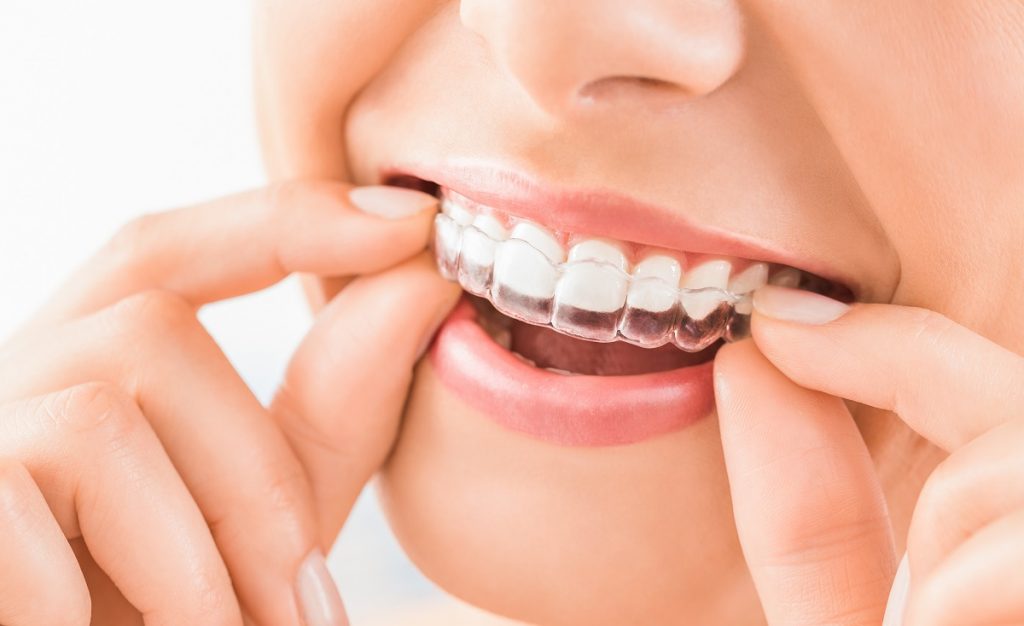Invisalign is the most well-established manufacturer of clear aligners, sometimes called clear braces W1, and is responsible for the formation of the whole aligner industry. But Invisalign is not a cure-all and it has never worked outside of the traditional dental surgery, unlike some of the newer aligner providers who proclaim to offer orthodontic treatment online by sending aligners through the post. By working inside clinics the treatment you would get using Invisalign is under the guidance of a dentist or orthodontist and allows you to get the most from your treatment.
The role of clear aligners
The clear aligner has been approved for the treatment of mild to moderate orthodontic misalignments by the BOS, British Orthodontic Society, the main body which represents orthodontists in the GDC, General Dental Council.
This has led to them being grouped in with cosmetic treatments, but this is not their sole purpose. This hybrid form of orthodontic treatment allows crowding and gaps in molars to be resolved, allowing for better chewing and oral health.
Aligners in a dental surgery vs aligners in the mail
For aligners, there is a pathway or checklist that patients have to tick to be deemed suitable for treatment, which due to the pandemic may be either in-surgery or via an online consultation form. The pathway starts with booking an appointment and coming in for an assessment. If treatment is necessary and suitable, you can discuss the orthodontic options which may include Invisalign. Online, you will be asked to fill in an assessment form; dependent on the provider, there may be a video consultation and request for you to send photos of the inside of your mouth.
If you proceed in a clinic, a digital record will be made of your teeth using an intraoral scanner or from a set of dental X-rays. However, with the alternative online provider they will send out a home dental mould kit with a set of DIY instructions; you post back the finished mould of your teeth which will then be scanned to obtain a digital record. Both of these methods can work well, but the use of a home mould kit is prone to user error, resulting in less-effective treatment.
Treatment time for aligners

The total treatment time is hard to generalise as it is quite variable based on the patients’ needs; 6 months would be considered short and more than a year is not unheard of. There is a bias from online providers to promise rapid results and emphasise cases which have been resolved quickly. Each aligner is worn for approximately 2 weeks, but when going through the treatment with a dentist, there are 2-week check-ups and whether you need to stay on an aligner for longer or move on to the next will be discussed. This allows the treatment to be tailored to how your teeth are responding and help keep your tooth position in sync with the aligner you are currently using.
Use of refinement aligners and retainers
At the end of the treatment with Invisalign, an assessment is made by your dentist or orthodontist on the risk of reversion. If you are deemed to be at a high-risk of your teeth reverting to their original positions, a custom retainer will be required.

